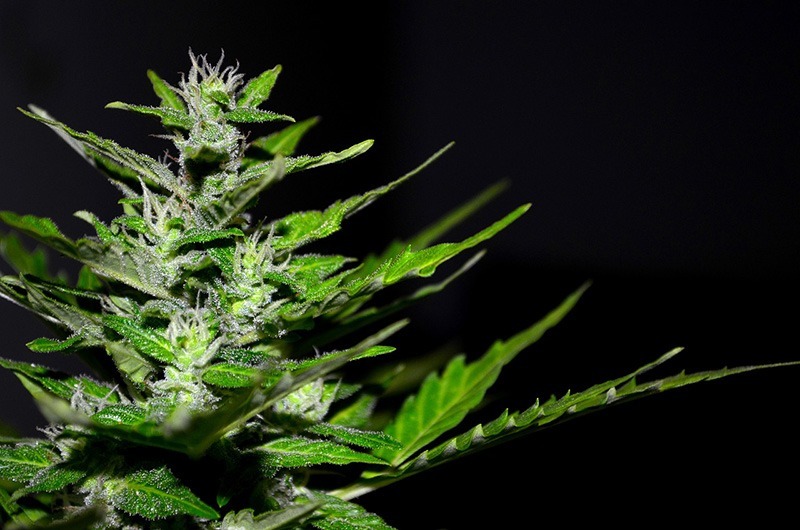Table of Contents
- 1
- 2 An Overview of the Mainline and Manifold Process
- 3 The Distinction Between Manifold and Mainline
- 4 The Advantages of Mainline and Manifold
- 5 The Challenges of Growing Cannabis Mainline and Manifold
- 6 The Finest Strains for Mainlining and Manifolding
- 7 Other Best Ways to Train Cannabis Plants
- 8 Further Reading:
Last Updated on April 27, 2023 by Team Spinfuel
Mainline and Manifold Cannabis training are methods for growing plants with eight major colas instead of one. Both methods entail topping the plant numerous times to create a symmetrical structure. Asymmetrical colas, great lateral branching, and an efficient plant structure are all advantages of mainline and manifold training. This article will explore how to cultivate weed seeds using the mainlining and manifold methods.
An Overview of the Mainline and Manifold Process
Cannabis plants grown from seed form symmetrical nodes with a developing tip and a fan leaf on either side of the same node early in life. While counting the nodes, begin with the first set of serrated leaves and work your way up. Gardeners usually remove growth tips in mainline and manifold before they can mature into a significant branch. While they are young, they are referred to as “growth tips,” but if left on the plant, they will grow into branches.
The big branches that reach the canopy are referred to as tops. This is because they nearly reach the top of the plant. The topmost branches will fill with flowers during the flowering period and become known as “colas.” One of the primary benefits of mainline and manifold training is that it results in cannabis plants with many colas!
Mainlining
The term “mainline” is credited to the grower “Nugbuckets,” who popularized the essential technique. Nugbuckets topped three times to generate marijuana plants with eight equal colas. He describes “cannabis mainline” as a cannabis plant topped three times at symmetrical nodes to generate eight equal main branches or “colas.”
Manifolding
Grower “Nebula Haze,” who adopted Nugbuckets’ mainline approach, is credited with coining the term “manifold” for cannabis training. Instead of topping the plants three times, the method produces eight almost identical branches after only two tops. It takes less time to complete because the third topping is skipped. However, it must be more symmetrical and usually saves 2-3 days compared to a full mainline. “Cannabis manifold” is a crop that has been topped twice: two branches are saved at the first topping. Then, during the second topping, four branches from each side are retained, resulting in eight almost identical main branches or “colas.”
The Distinction Between Manifold and Mainline
A simple manifold involves topping your cannabis plant twice: the first time splitting it into four primary branches, letting it grow till the fifth node on those new branches, and then topping it again, at which point you should have 20 or more colas springing out of the four main branches. This differs from a mainline, where you go from one main branch to two, then two to four, and four to eight. A manifold is finished after the second topping, while a mainline has one more topping. The time difference between finishing toppings on a manifold and a mainline is modest but might be considerable.
The Advantages of Mainline and Manifold
Mainlines and manifolds are the greatest techniques for training indoor cannabis plants. They produce huge, well-balanced plants with an even canopy. Mainlines and manifolds are simple to train and modify throughout the stretch’s rapid expansion. Pulling the main branches outward allows lateral branches to fill in the canopy. Mainlines and manifolds can expand to fill the available area. A broad and even canopy allows for the most efficient use of light, increasing yield.
Mainlines and manifolds are likely the greatest technique to achieve the required growth form and canopy coverage. Plants with several “tops” are created by mainlines and manifolds. The eight major branches each develop their own “top,” while lateral branches from each can extend into the canopy and mature into “tops.” This more proficiently distributes the plant’s fertilizer or energy and produces numerous colas rather than just one. Thus, these procedures generate a high yield of the most appealing buds.
The Challenges of Growing Cannabis Mainline and Manifold
The most difficult task with mainline and manifold training is getting the plants healthy and developing swiftly. Because you should never top a failing plant, mainline and manifold training may be delayed or prevented if the plants struggle early on. The medium in which you grow significantly influences how long it takes to complete manifold and mainline training. Manifolds can be completed in less than four weeks in coco coir with high-frequency fertigation, and mainlines can be completed in less than a month. In soil, training for these procedures takes six to eight weeks.
The Finest Strains for Mainlining and Manifolding
One of the purposes of manifolding and mainlining is to create equal-sized colas; therefore, choosing the best marijuana strains that pair well is critical. These techniques do not affect the nature of the strain because the plant will continue to develop to its full height and size. The ideal cannabis plants for these procedures are ones with a single cola dominance, a medium to tall growth pattern, and minimum secondary branching. MAC 1, Black Runtz, Snowman, Zoap, and Trufflez are great cannabis strains for mainlining and manifolding.
Other Best Ways to Train Cannabis Plants
Plants can grow horizontally and evenly with the help of mainlines and manifolds. They are, however, not the only methods for training cannabis plants to grow horizontally or otherwise fill the canopy. Many gardeners train their plants to be low and broad by using a “screen of green” (Scrog). Also, cultivating many little plants in a “sea of green” (SOG) is another approach. In various settings, these are both good plant training and management approaches.
Further Reading:
The Ideal Light Cycle for Cannabis at Different Growth Stages
Your Ultimate Guide To Cannabis Dispensaries, Headshops, And Collectives
How To Dry and Cure Cannabis in 2023
Cannabis Virus What Is HLVD or HpLVD? – Hop Latent Viroid









